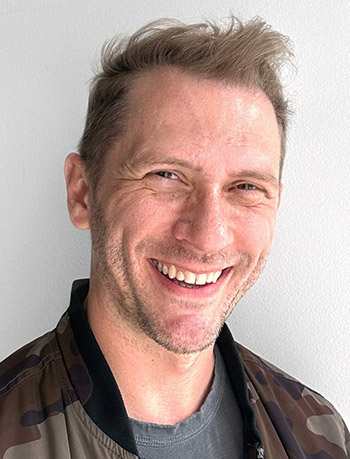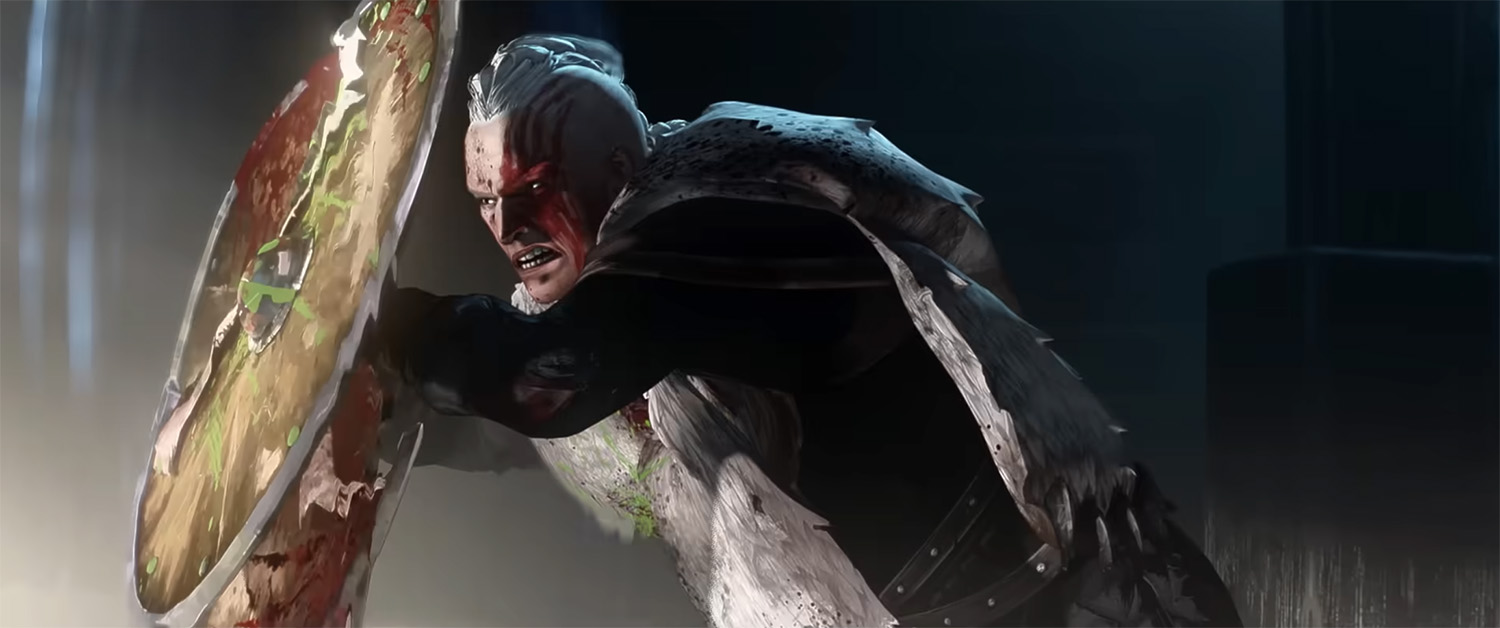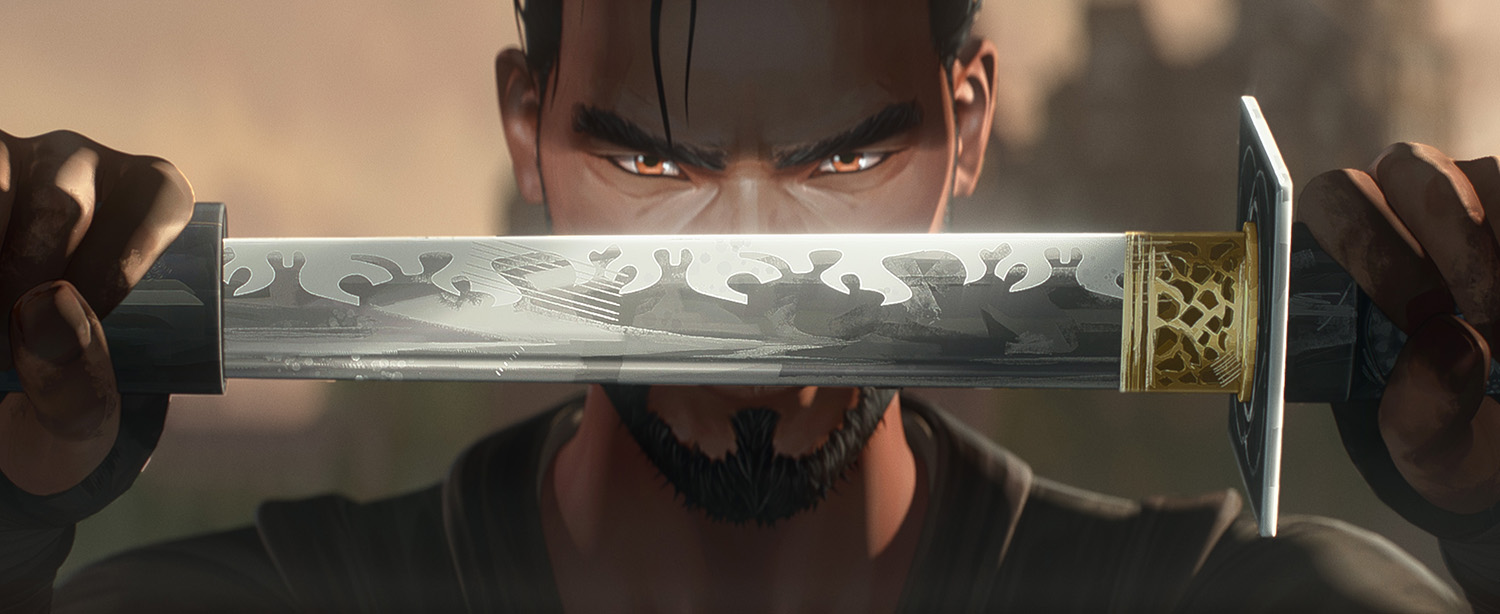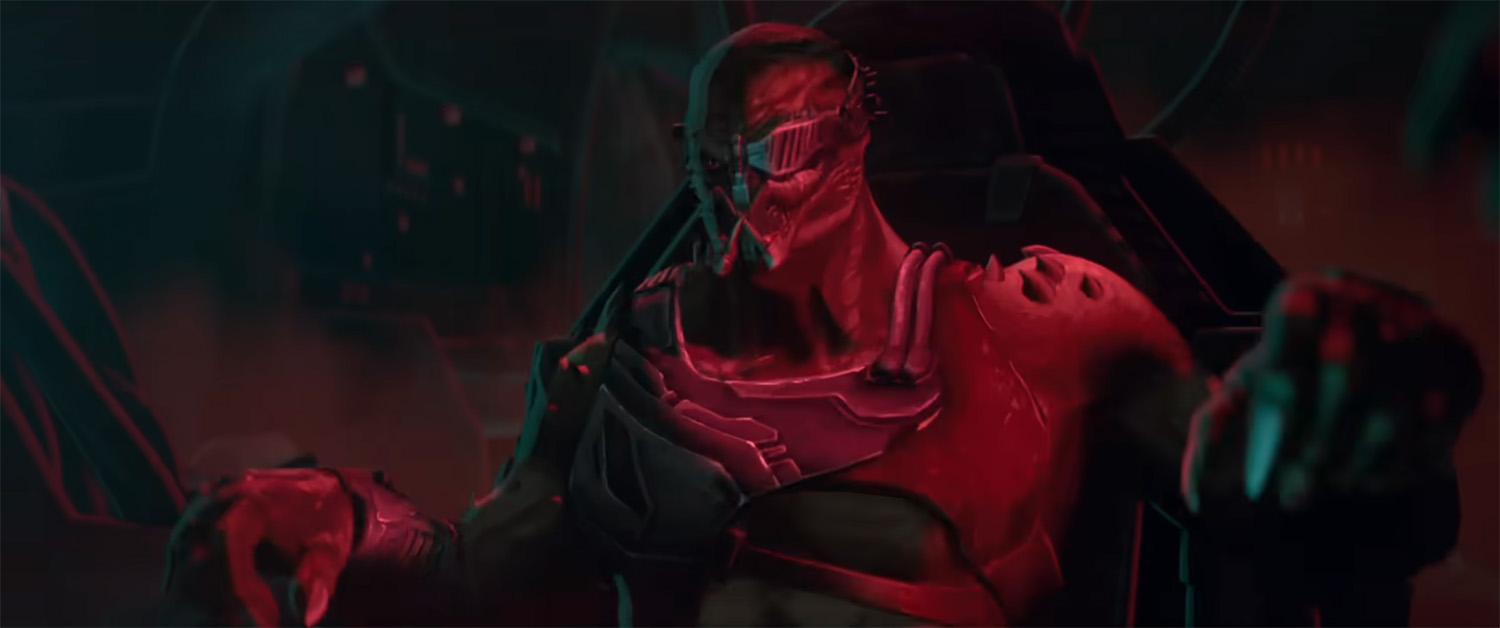
When writer/director Dan Trachtenberg’s (10 Cloverfield Lane) animated feature Predator: Killer of Killers debuts tomorrow, June 6, on Hulu, it will be the second of three official Predator films on his resume. This animated entry is bookended by 2022’s Emmy-nominated Prey (2022) and the upcoming live-action feature, Predator: Badlands, in theaters this November.
Not only is Trachtenberg the fresh creative voice the almost 40-year franchise has been looking for, but it was also his idea to expand the Predator universe into animation with Predator: Killer of Killers. In 2020, he turned to previs/postviz studio The Third Floor to create storyboards, previs, and live-direct performance capture for Prey, working directly with studio chief creative officer and co-founder Joshua Wassung. They had previously discovered a shared creative ethos and love for character-based action, so they hunkered down for the two year process of bringing Prey to life.
In parallel, Wassung and The Third Floor were actively setting up the technical foundation needed to expand their use of Unreal Engine into a cinema-quality animation pipeline. When they shared their intentions with Trachtenberg, he shared his hope to someday make an animated Predator feature. Suddenly, their creative goals became intertwined. Five years later, Trachtenberg and Wassung are the co-directors of Predator: Killer of Killers, and The Third Floor officially has its animation studio up and running.
Cartoon Brew recently spoke with Wassung to find out how The Third Floor was able to scale up fast enough to make an animated feature of this caliber and ambition, as well as learn more about their creative intentions of bringing to life this unique anthology feature about the Yautja warriors.
Cartoon Brew: When did you start the actual work of creating an animation group at The Third Floor?

Joshua Wassung: We had been investing in the department since 2020, so it was really in parallel with Prey. At the time, we didn’t know Predator was going to be the thing. We’d really been putting a lot of work into the pipeline side, and the core team building side.
Backing up, we had done this short film Skytribe on YouTube. We did that short very much as a test of a larger production even though it was only one minute, 45 seconds. We partnered with other vendors. We built a pipeline to see if we could put plugins into a pipeline because we knew that if we had to grow, we had to grow fast. We experimented with that methodology. Even though it was a really short form, we treated it as if it was a bigger production. We met the folks at Steamroller Studios and they helped us on that short. And so we were building these relationships, but also building this team. We felt we could do something unique by starting with previz and let’s see if we can push it up. It’s just a different mindset and we were really excited about that.
When did Dan get involved in the conversations?
I was just showing him as we were going for those two years. At some point while we were on one of our calls during COVID, he was like, “It would be so rad if there was an animated Predator movie.” And I’m like, “Oh my God!” But I remember he said, “I can’t even ask until this movie comes out, and it has to do well.” He knows what he’s talking about. We were both very excited about it, but had our reality check in place. And lo and behold, as you know, it was very well-received. Shortly after he was done with all of his press, we had a lunch get-together, and he’s like, “Hey, I brought it up. This could be a really cool thing, and they’re interested.” That sparked our conversation of what could it be. He had some ideas and I had an idea and it just grew from there.
What did you do to sell 20th Century Studios on the idea?
As they say, there’s never one day when a movie is approved. It was like, let’s do an actual pitch for this project which was the first thing. Then a few months later, we got a little bit of budget to do some art and a little bit of story exploration. It was little stages, until, “Oh man, this is starting to feel pretty real.” And so everyone’s kind of gearing up with who we would hire, and how many people we would hire. There were a lot of experimental tests and also the tools we had already developed. We knew if we get greenlit, it’s going to be pedal to the metal on this “to do” list. It was a lot of planning to get ready for the greenlight. It wasn’t like a one day switch. It was like, “We’re getting ready. We’re getting ready. Greenlight…Go!” And then it was crazy fast. Once we got the full greenlight to dive in, it was 18 months for production.
How was that possible when you had only done a proof of concept test?
There’s two major areas of speed. I’m a big believer that the most impact you can make on a schedule is to speed up decision-making. I feel like decisions are actually the thing that cost the most money and the most time. We knew we had to get the movie up on reels, really, really quickly. They had a very ambitious timeline to release this, so they wanted to move very, very fast. We used previs as a way to get it up on reels incredibly fast, and we did it in Unreal Engine.
We have been actually using the game engine for previs for several years, so that wasn’t new. But the animation pipeline on top was more on the new side. Because it was a slow period of the industry, right at the beginning of the strikes, we actually had a large number of our really top people at the company that we were able to tap and bring in. We divided it up into quadrants, if you will, and built mini-teams with everything in parallel. We got the movie up on reels, with the first, full cut in four months.
From there, we iterated screenings, so we just did screening, screening, screening, screening. It was from the first week of September to December 23, 2023, which was the day we delivered that first full cut, which we knew was too long, by the way. We knew we had to get it down.
What was the feedback from the studio?
The feedback from the studio was great. The execs were really excited about this new process. We were able to tweak the story, especially narrowing in on the threads. To reduce the length, we have to [decide] the threads of the story we’re going to focus on and what characters are we really going to lean into? So that became the iteration process, and we screened it several times in early 2024. We started handing over animation, like locking sequences with recorded dialog in March. And then we handed over our final sequence of the whole movie in June 2024.
From there, everyone agreed. We all held hands: 20th, Dan, myself, the whole team, and we all said, “This is the movie we’re making. We’re not changing this movie.” It was a little bit of something everyone wanted to do, but it was also like, there is no way we can deliver this movie if we don’t agree with that. The edit is very much the edit that is gonna be on Hulu on June 6th. What was cool then was we’re animating, we’re polishing, we’re leveling up these shots, but we’re not fundamentally changing them. So, that really means it was 10 months to really lock the story, visually and the audio because the dialog was recorded as well.
Obviously, it’s huge to have all of the various collaborators on the same page in regards to locking the story and sticking to it. But how was your team able to move so fast to get the animation done?
I really credit the team. Our previs supervisors are incredible as they’ve been doing this for so long. They were just jazzed to dive into it and work with Dan, myself, and Stefan Grube (10 Cloverfield Lane), our editor who is incredible.
At the same time, we built this new, real-time lighting and compositing system. It’s a proprietary one that we built in the Unreal Engine. It allowed us to do about 80% of our compositing work before hitting render — all of our stylization, all our lighting passes, even stylization. We have this cool thing where the lighting has brush strokes on it, like on the rim lights. Little things that typically would be many, many passes, are in real time. And that was already baked in by the time we rendered the first frame of a shot. That allowed the lighting team to make some really gorgeous work, but just crazy fast.
When the team ramped up, which was last fall 2024, they were doing, like, four or five hours a shot for first pass. And that was with some feedback with the lighting supervisors. That’s crazy fast. Yet again, we did a first pass of the whole movie in lighting. And then we were able to spend the final few months tweaking and improving and polishing from there. And we did have Nuke for roughly 20% of compositing, for some of the things that were a bit more complicated. It was one of those things where we’re like, “We hope this works!” We were all planning for that speed and we knew it had to be that speed, but honestly, they did it faster than we expected them to do it.
What was the size of the team?
In-house, it’s a bell curve. It started with maybe 60 people and it peaked at maybe 165, then back down to 30-ish people towards the end. We had three vendors that helped out.
The anthology takes place in Viking times, feudal Japan, and World War II. Did you distribute each era to a separate vendor?
One vendor did a sprinkling of assets throughout. But we also had our internal assets team, so they were working with them too. They’d send that stuff over, and our 3d art director would tweak. Ed Kil was our 2d art director and he would oversee that every asset has the proper brush strokes to fit the style that was established. On final animation — which we had already done all the layout for at pretty high level so it was screenable — we were able to give all that to the vendors. Steamroller did two chapters and then there was an internal team that did the last chunk of the movie. But all of it was actually running on our machines in our pipeline. We built it so they would literally remote into our system. It wasn’t like, “Here’s the movie. You do it.” It was more like, “Give us some talent to work with that we can plug into our whole apparatus.”
Shifting to the illustrative look of the film, what were you and Dan going for with your aesthetic choices, especially seeing that this is a period piece?
The core conceit was “moving concept art” and we actually made that pitch to the studio. On the other side were the historical eras. We brought on Amee Carter, who is Rick Carter’s daughter. This is her first time production designing. She comes from his world, but also the world of history and culture. She started out as a researcher on Lincoln, so she had that in her bones. She really understands how to dive into a particular culture and do that culture justice. Joel Chang was co-production designer with Amee. I think Joel brought this painterly flair, but he also came from live action. He painted in a very cinematic lighting style. Then Amy really came from that cultural research, but also how to make practical films.
It was very important to Dan that, even though we were in a stylized world, he really wanted all this art to be rooted in that particular culture. Hopefully people can feel that when they see it. We carried that through in the photo reference and the old traditional art and everything we could research. We brought on professional cultural advisors. Dan and I have been working together for years and we just wanted to make the movie the way we do any movie. It just so happened to be animated, so you wanted to then take advantage of the animation medium.
How did you tackle interpreting violent Predator action sequences into animation?
One of the first scenes we did was this sword fight between brothers. On the one hand, we started planning it in the way you would plan a live-action sword fight. But on the other hand, what are the areas that we can push? I would say we landed in a world that’s definitely more grounded in a live-action world than traditional animation is. But we have these beautiful poses. It’s interesting because there’s a perfection in its realism which inherently has flaws. We’re filming in a way that is a little bit imperfect, the way a live-action movie might be filmed.
There’s this brutality to the fights that feels very real, yet you get to craft these poses in a way that just makes them pop, right? It’s finding that balance of the messiness of the reality in filming in live action, if you will, but with the perfection of crafting poses. We built our rigs so that we could actually sculpt our characters to camera. It was so rad to see the animators just bring it, because that’s the action we planned but it’s even more vibrant. They’re also animating on twos, too. I think the animators really dove into that because it allowed them to really push those poses even more in all those fast action scenes. I think it was like 75% how it would be in live action and then 25% with this posing, timing, and slight exaggeration, always with the goal of making things more clear.
What are you and Dan most proud of with the finished film?
There’s a lot of things. The thing that we’re both proud of is that when you watch this movie, it feels like a thrilling ride that you care about. There’s a solid story that I think will resonate with a lot of people. And it’s unexpected. One of the things that we joked about, but were excited about is, on paper, if you were to see a little synopsis of Badlands and a little synopsis of Killer of Killers, you would assume they were opposite. You would assume the one that is live action to be animated, but we put one expected to be animated as live action. There’s something really cool about that. Even the structure of the movie, being based in an anthology through history, feels refreshing.
What are your near future goals with The Third Floor animation output?
We’re really bullish on it. We really want to get to being a multi-project studio. We want to naturally ramp up to three concurrent productions in various stages. It would be a great way to just keep the talent occupied. Ideally, you offset the departments so that they ramp up or down. You have the offset projects so that we can keep these talented people rolling into the next one and the next one. We really see this as a long term business for us, and we’re really excited about it.








